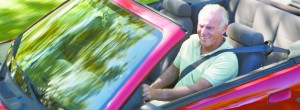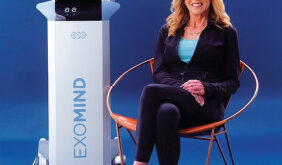By Dana Luzon, Au.D., CCC-A, FAAA, Board Certified Doctor of Audiology
 Noise-induced hearing loss (NIHL) is the most common type of hearing loss, but folks aren’t always sure where their hearing loss comes from. There are some fairly obvious ways to damage your hearing, such as listening to music at excessive volumes, or firing weapons without hearing protection. Then there are situations where protecting your hearing doesn’t seem very important, but doing so might actually prevent further damage. Consider the following sneaky causes of hearing loss.
Noise-induced hearing loss (NIHL) is the most common type of hearing loss, but folks aren’t always sure where their hearing loss comes from. There are some fairly obvious ways to damage your hearing, such as listening to music at excessive volumes, or firing weapons without hearing protection. Then there are situations where protecting your hearing doesn’t seem very important, but doing so might actually prevent further damage. Consider the following sneaky causes of hearing loss.
WORKPLACE NOISE
Although many construction and manufacturing jobs state that hearing protection should be worn at all times on the job, these warnings are not always adhered to. Those who wear hearing protection may not be wearing it at all times — it may be removed to talk with co-workers or supervisors despite close proximity to high-noise-producing machines, and depending upon how loud those machines are, damage can be caused fairly quickly. Even with hearing protection, noise damage can slowly accumulate and wear on the delicate hair cells in the inner ear.
OTOTOXIC MEDICATION
Ototoxic medications are drugs such as painkillers that have chemical properties that make them toxic to the sensory cells in the ear. Painkillers taken in high quantities create not only a risk for dependency but for losing hearing as well; strong pain medications first cause a ringing in the ears before beginning to have adverse effects on hearing, but the impairment often goes away after discontinued use.
SMOKING
Because of the impact and high profile of major diseases caused by smoking, potential hearing damage as a side effect of smoking often flies under the radar. But nicotine is a vasoconstrictor that causes blood vessels to shrink slightly, restricting blood flow to the inner ear and preventing oxygen from reaching it. Over a lifetime, this “suffocates” the ear.
DRIVING A CONVERTIBLE
Driving more often creates potential for developing or worsening hearing loss, thanks mostly to the sounds of the road and other passing vehicles. Some cars dampen sound, but convertibles lose that extra layer of “quiet ride” protection, leaving ears exposed to potentially dangerous noise levels around them. An October 2009 study found that driving some convertibles at speeds between 50 and 70 miles per hour exposed drivers to noise levels of 88 to 90 dB — beyond the level where damage begins to occur (85 dB).
PUBLIC TRANSPORTATION
The squeal and grind of light rails, trains, and even buses coming to a stop have the potential to cause hearing damage to daily riders of public transportation because they’re constantly exposed to noise. Rough or curved tracks prevent smooth rides, leading to more noise. And those who are waiting for their bus or train are exposed to potential traffic on a busy street, which can sometimes reach levels of 100 dB or more.
ATTENDING SPORTING EVENTS
Due in part to the nature of sporting events — watching athletes perform — the danger of noise is often forgotten. Many stadiums still manifest crowd noise dangerous enough to damage hearing. Seattle’s CenturyLink Field last year posted a decibel record of 137.6, enough to cause permanent damage in 30 seconds. Noise levels of 115 dBs or more — about the equivalent of a concert — are not uncommon but are safe to experience for only 15 minutes.
Audiology & Hearing Aids of the Palm Beach, Inc.
561-627-3552
4266 Northlake Blvd· Palm Beach Gardens, FL 33410
www.hearingcarefl.com
Check Also
Physical Therapy for the Brain
Have you noticed you have difficulty hearing your family and friends in a noisy restaurant? …
 South Florida Health and Wellness Magazine Health and Wellness Articles
South Florida Health and Wellness Magazine Health and Wellness Articles




